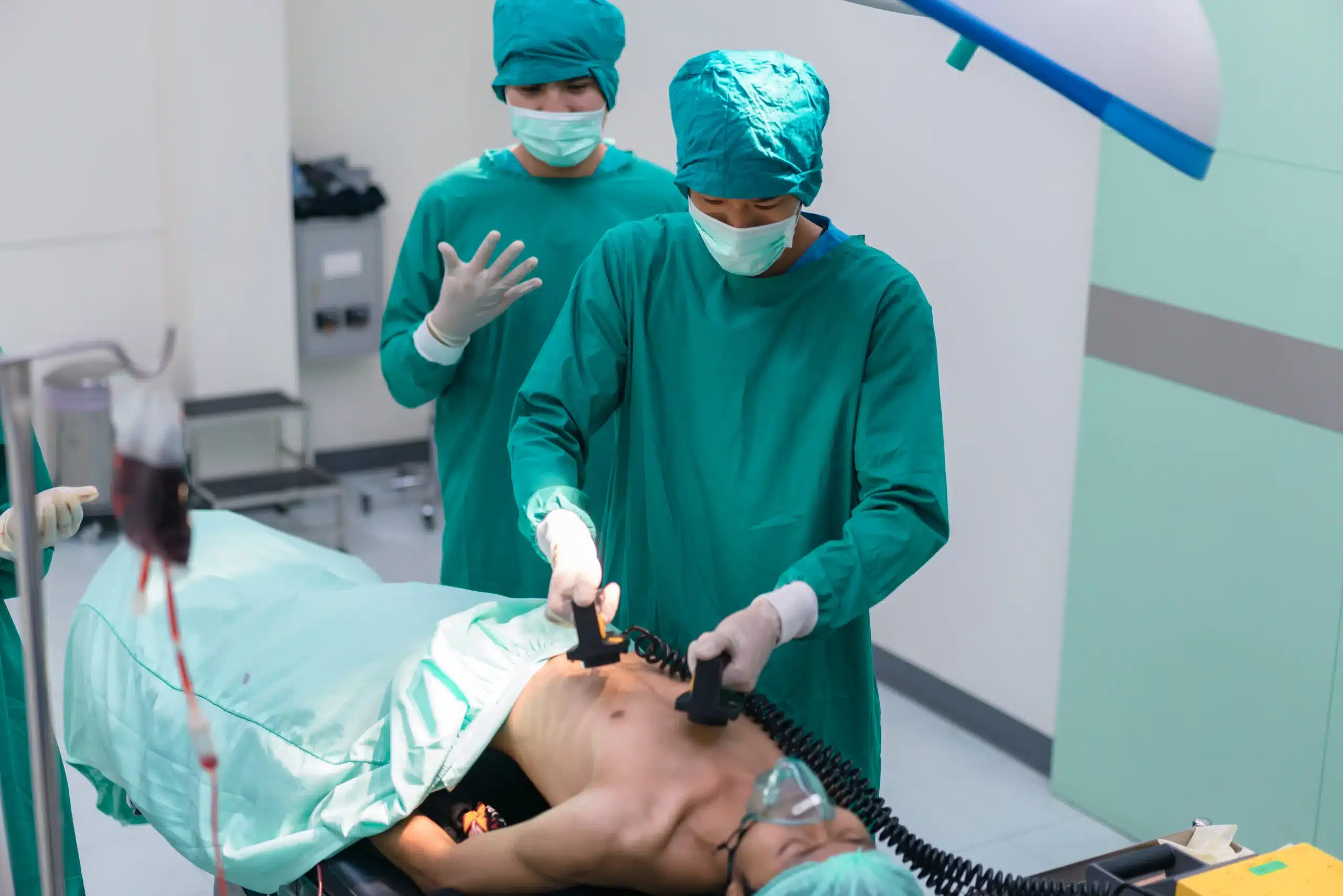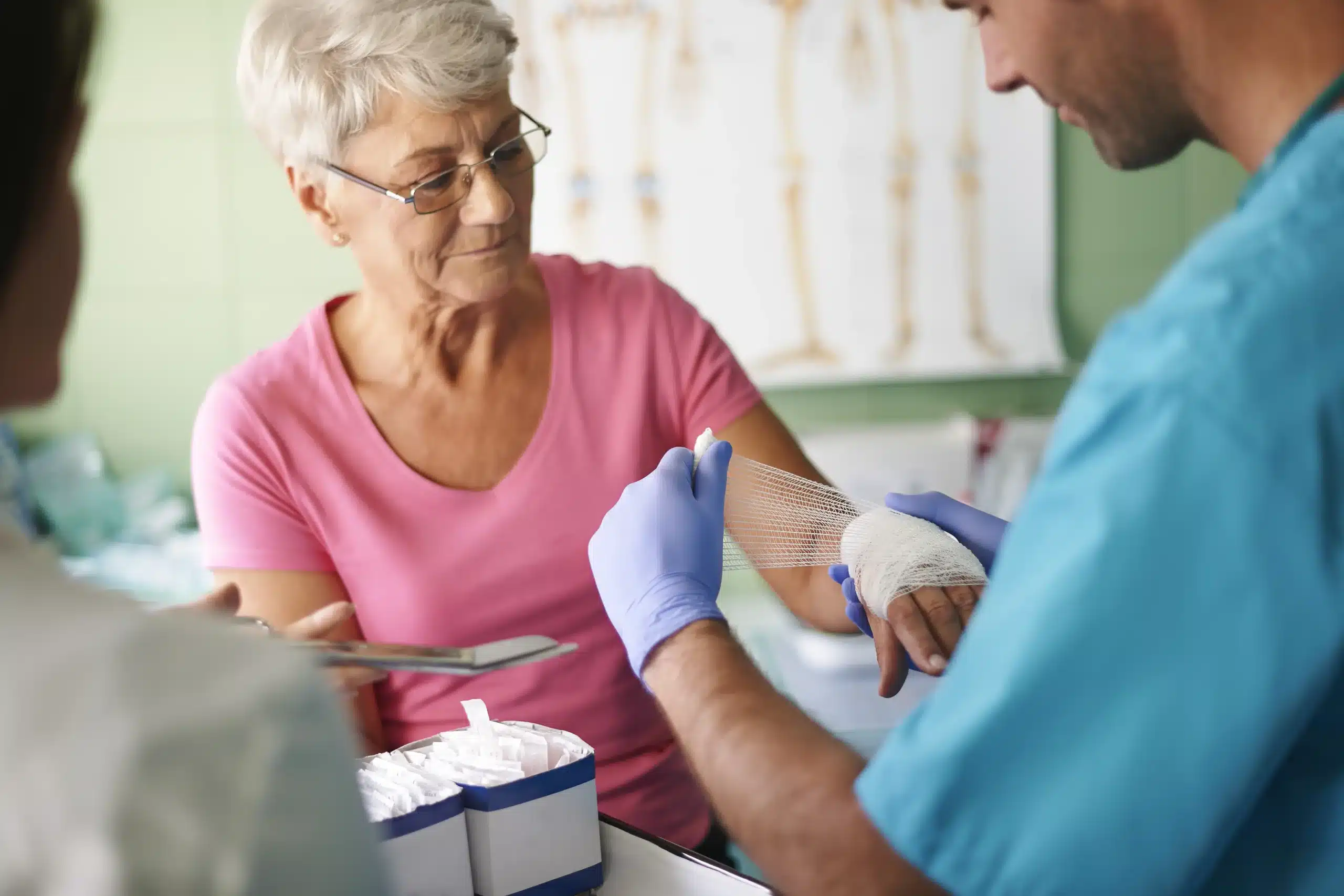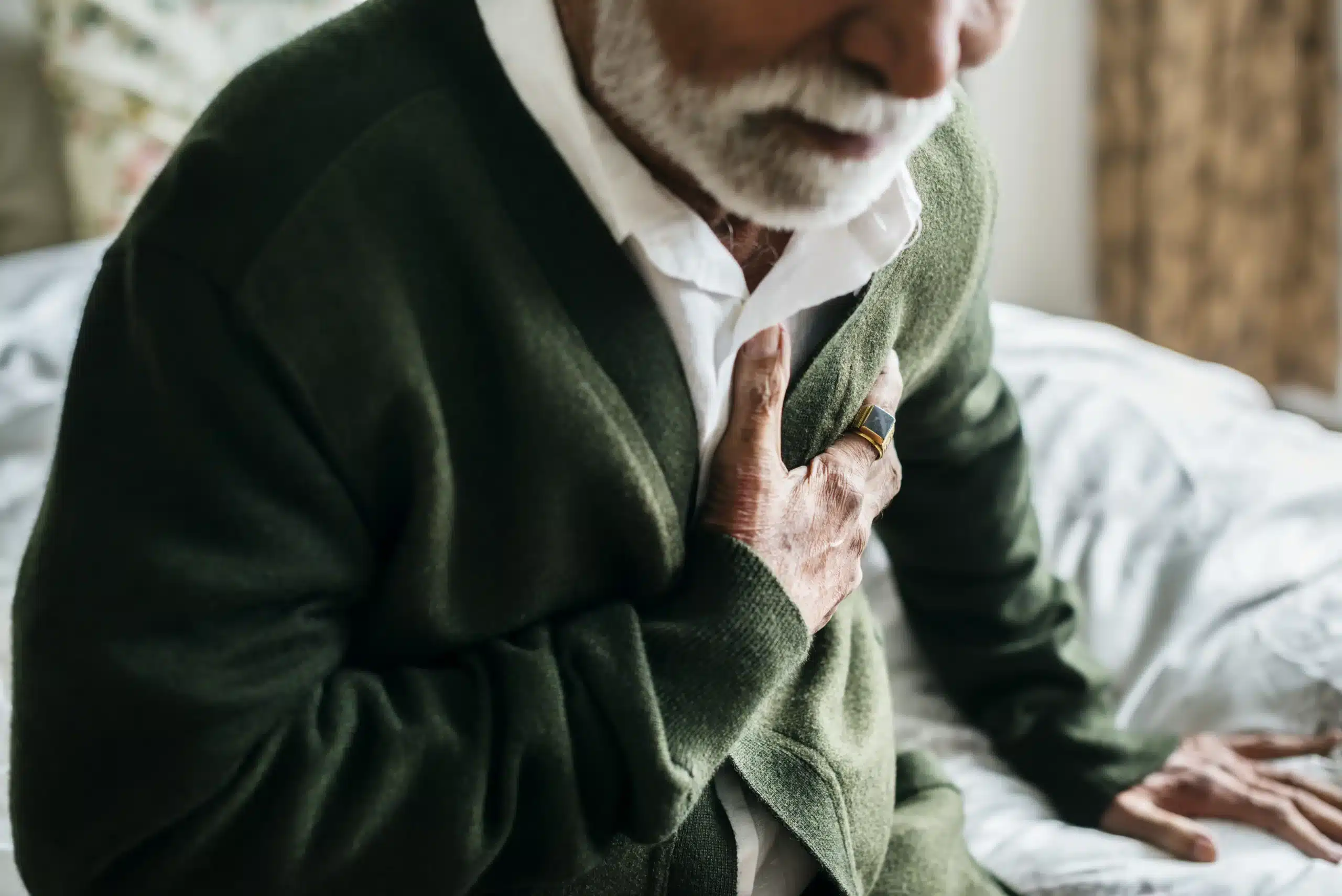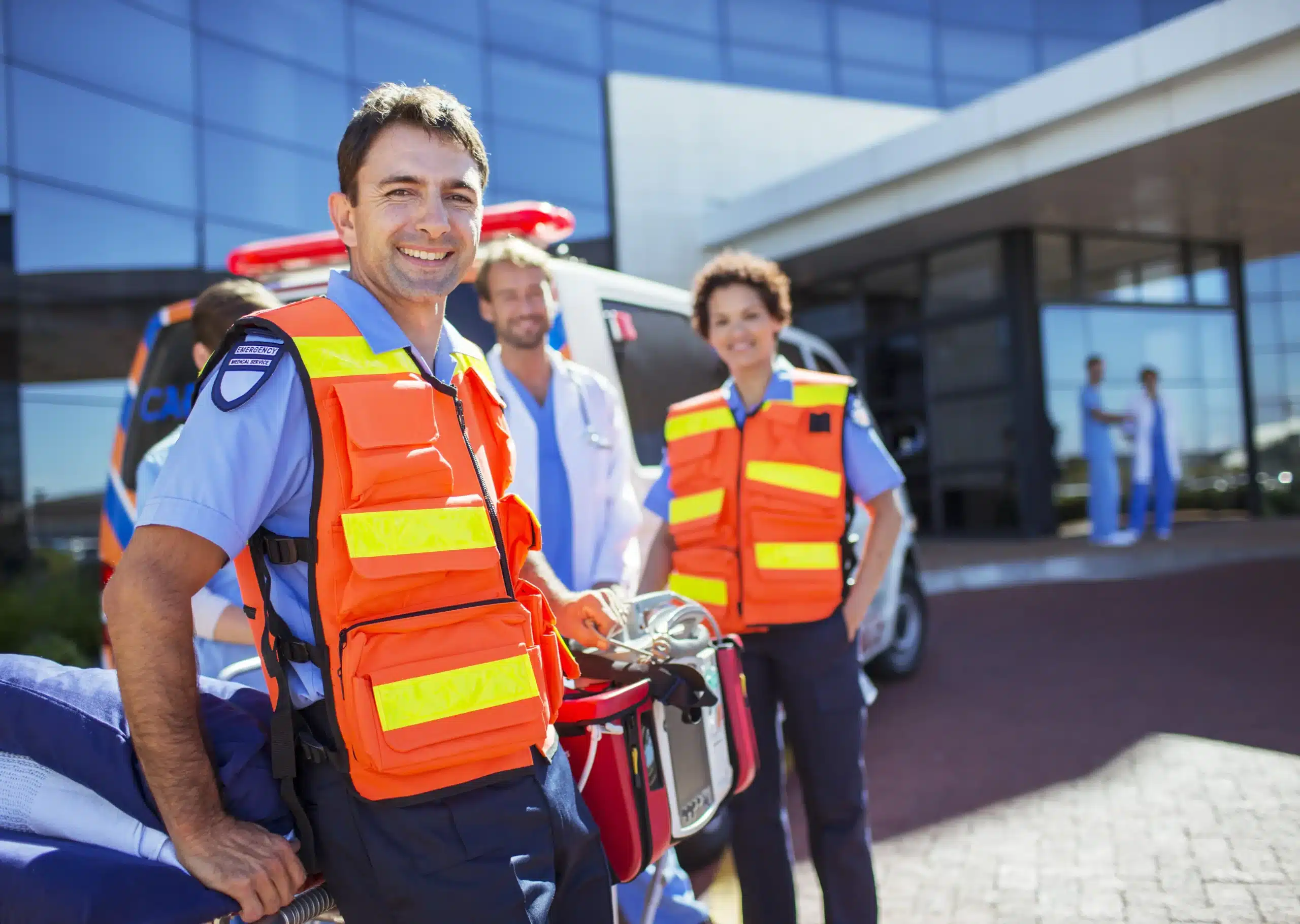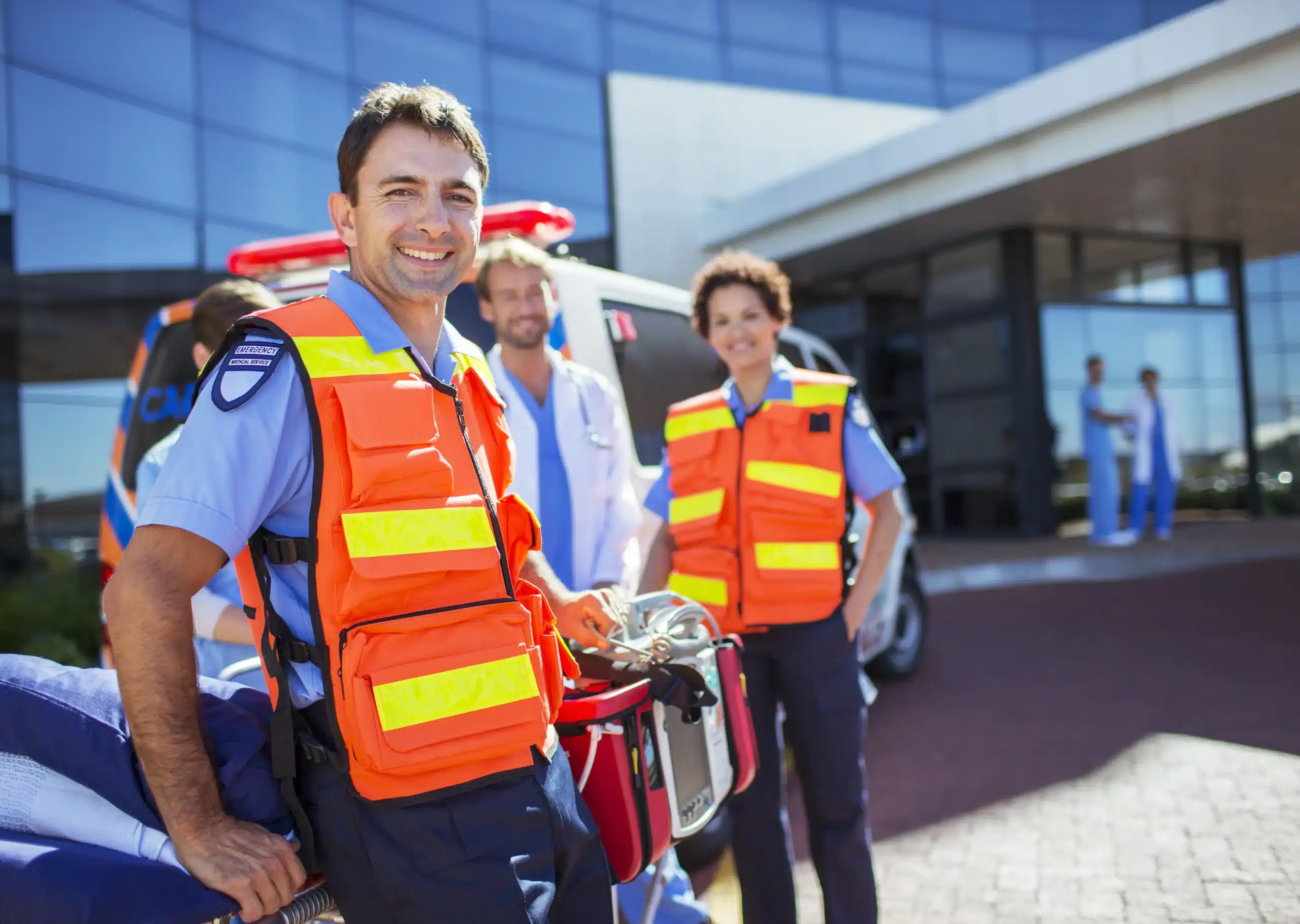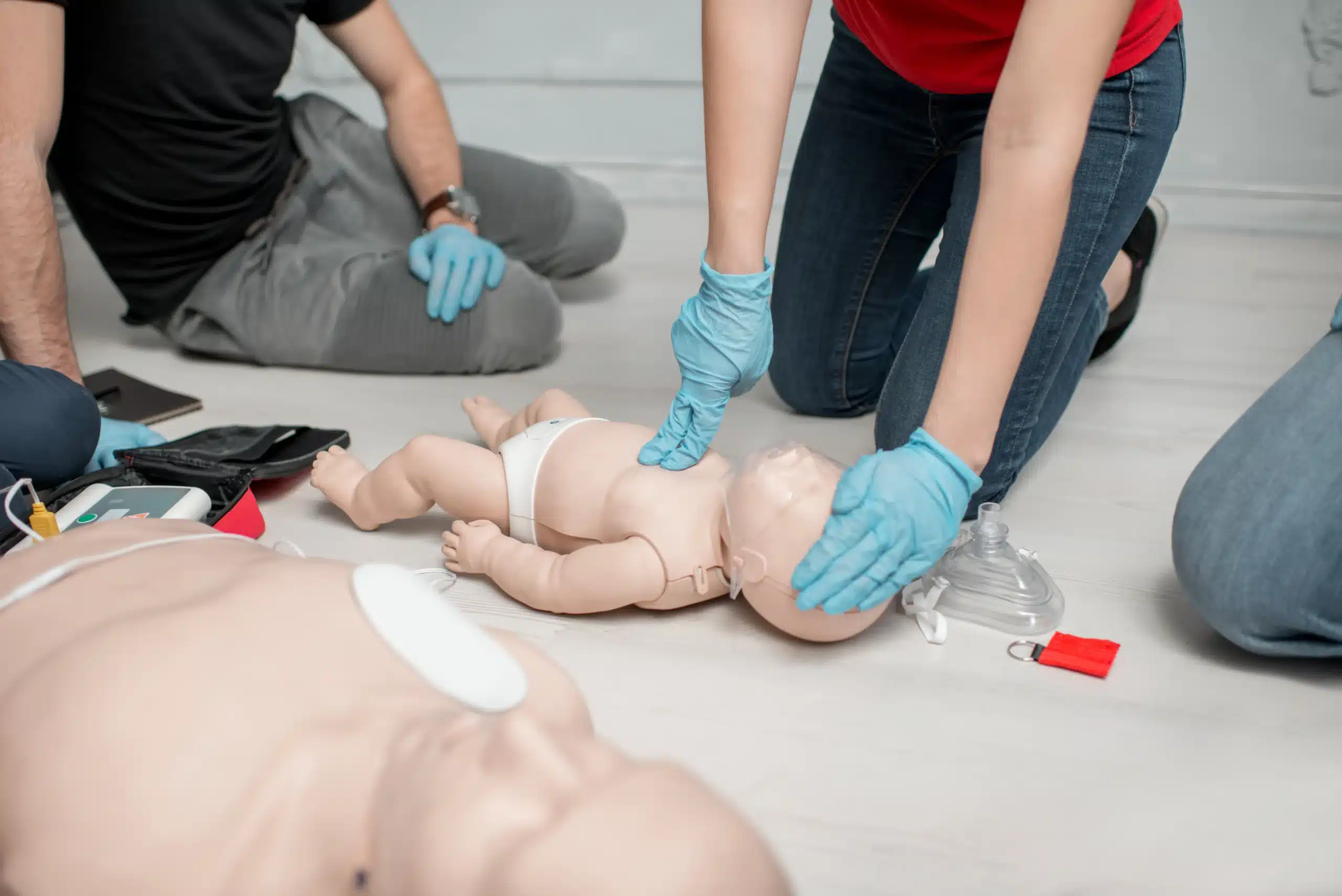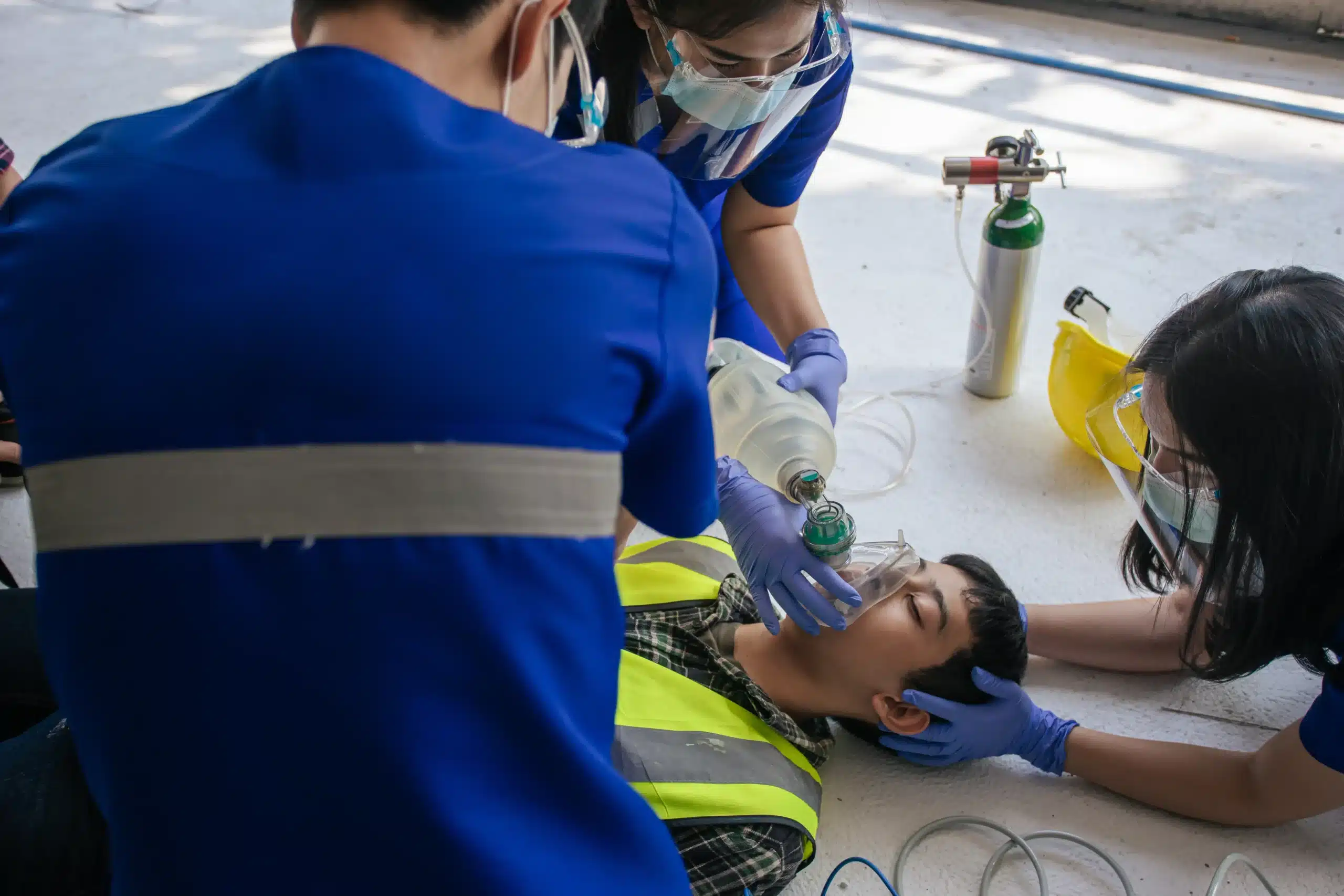Emergencies can happen anytime, anywhere. Being equipped with life-saving skills like CPR can give you the confidence to act quickly and effectively when every second counts. This guide is your comprehensive resource for all things CPR. We’ll explore what CPR is, why it’s essential, and how you can find training near you (CPR courses near me). We’ll also discuss the different types of CPR courses available, the costs involved, and the long-term benefits of certification. Whether you’re a healthcare professional, a concerned parent, or simply someone who wants to make a difference, this guide will help you on your journey to becoming CPR certified.
Key Takeaways
- CPR empowers you to save lives: Find a course that fits your needs, from basic to advanced certifications, and become confident responding to emergencies. Explore affordable options like group discounts and low price guarantees.
- CPR skills provide lasting value: Learn to provide immediate assistance in medical crises until professional help arrives. Choose a course format – online, in-person, or blended – that works best for you.
- Active participation maximizes learning: Prepare beforehand, engage during training, and refresh your skills regularly to stay prepared and confident. Investing in CPR training benefits you and your community.
What is CPR and Why is it Important?
CPR, which stands for cardiopulmonary resuscitation, is a life-saving emergency procedure used when someone’s breathing or heartbeat has stopped. This can happen due to a heart attack, near drowning, or other life-threatening situations. CPR combines chest compressions and rescue breaths to manually circulate blood and oxygen throughout the body, keeping vital organs alive until professional medical help arrives. The Red Cross emphasizes that CPR can dramatically improve survival rates during cardiac arrest. Our Antioch CPR classes offer comprehensive training and certification, equipping you with the skills to respond effectively in such emergencies.
What is CPR and why is it crucial?
CPR is crucial because it buys time. In the critical moments after someone experiences cardiac arrest, every second counts. Immediate CPR can help maintain blood flow to the brain and other vital organs, preventing irreversible damage and significantly increasing the chances of survival. Learning CPR empowers you to take action in a crisis and potentially save a life. It’s a skill that can make a profound difference for individuals and entire communities. We offer CPR classes in Antioch designed to provide you with the knowledge and confidence to respond effectively in emergencies.
What CPR courses are available?
Several organizations offer CPR certification courses, including the American Heart Association (AHA) and the American Red Cross. These courses cater to different needs and experience levels, with options for everyone from laypeople to healthcare providers. The AHA offers BLS (Basic Life Support), ACLS (Advanced Cardiovascular Life Support), and PALS (Pediatric Advanced Life Support) courses. The Red Cross also provides various CPR and first aid certifications. Many local training centers, like ours, offer these courses with flexible schedules and smaller class sizes for a more personalized learning experience. Check out our discount group classes to make training more affordable.
How CPR training impacts individuals and communities
Learning CPR goes beyond individual preparedness; it creates a ripple effect throughout communities. When more people are trained, the likelihood of someone receiving immediate assistance during a medical emergency increases. This can lead to higher survival rates and better outcomes for those affected. CPR training also fosters a sense of empowerment and responsibility, encouraging people to help in times of need. Addressing common misconceptions about CPR, such as the fear of causing harm, is essential to encourage wider participation. Our low price guarantee makes this vital skill accessible to everyone.
Find the Right CPR Course Near You
Finding the right CPR course takes a little research, but it’s worth the effort to ensure it fits your needs and schedule. This section helps you find local training providers, understand key factors to consider when choosing a course, and introduces some leading CPR training organizations.
How to find local CPR training providers
Begin your search with nationally recognized organizations like the American Red Cross, which offers CPR and First Aid classes across the country. These organizations often have local chapters, making it easy to find a class nearby. A quick online search for “CPR classes near me” will also reveal local providers, including Safety Training Seminars, serving Antioch, Brentwood, and Pittsburg. Check with community centers, hospitals, and fire departments, too, as they often host CPR training.
What to consider when selecting a course
Think about the course format that suits your learning style and availability. Online CPR courses offer flexibility, while in-person training provides hands-on practice and direct interaction with instructors. Blended learning, a mix of online modules and in-person skills sessions, offers a balance of both. Before you sign up, confirm whether your employer or organization accepts online certification, as requirements differ. For the best prices in Contra Costa County, look into Safety Training Seminars’ Low Price Guarantee. Discounts may also be available for larger groups.
Top CPR course providers
Several respected organizations offer excellent CPR training. Here are a few to explore:
American Heart Association (AHA)
The AHA provides comprehensive CPR training and regularly updates its guidelines to reflect current science and best practices. Safety Training Seminars offers several AHA-certified courses, including BLS, ACLS, and PALS.
American Red Cross
The American Red Cross is committed to making CPR training accessible to all. They offer a variety of courses tailored to different needs and levels of experience.
Safety Training Seminars
Safety Training Seminars stresses the importance of being prepared for emergencies. They dispel common CPR myths, giving people the confidence to act in critical situations. They offer daily classes in over 60 cities, with official two-year certification cards issued upon completion.
National Safety Council
The National Safety Council offers a variety of CPR training courses to suit different learning styles and preferences.
ProTrainings
ProTrainings makes online CPR training convenient, allowing individuals to learn at their own speed and on their own time.
What Happens in a CPR Course?
So, you’ve decided to learn CPR—fantastic! Knowing what to expect can help you feel prepared and confident. Here’s a glimpse into a typical CPR course:
Course duration and structure
CPR courses are designed to be efficient and manageable, often wrapping up in a single day. You’ll cover essential life-saving techniques for both adults and children, with specialized courses sometimes available for specific needs. Expect a blend of interactive lectures, demonstrations, and videos. Many courses, like those offered by the American Red Cross, incorporate refresher materials and printable resources to help you maintain your skills after the course. Safety Training Seminars offers a variety of courses, including BLS, ACLS, and PALS, catering to different levels of expertise.
Certification process and validity
After completing your CPR course, you’ll receive a certification card, typically valid for two years. This card demonstrates that you’ve met the requirements for administering CPR. The certification process usually involves a skills test where you demonstrate your CPR proficiency on a manikin. This practical evaluation ensures you’re ready to respond effectively in a real-life emergency. Check out Safety Training Seminars’ Low Price Guarantee for affordable options in your area.
Essential skills taught in CPR training
CPR courses equip you with the skills needed to assist someone experiencing cardiac arrest. You’ll learn to recognize the signs of a heart attack and practice delivering chest compressions and rescue breaths. Courses also cover how to use an automated external defibrillator (AED) and what to do if someone is choking. These skills empower you to provide immediate assistance while waiting for professional medical help. For healthcare providers seeking advanced certification, consider the ACLS course offered by Safety Training Seminars.
Hands-on practice and simulations
A significant part of CPR training involves hands-on practice. You’ll work with training manikins, like those used in courses described by Emergency First Response, to develop a feel for delivering chest compressions with the correct depth and rhythm. This tactile experience builds muscle memory and confidence. Some courses use realistic simulations to help you apply your skills in a safe environment, guided by experienced instructors, similar to those highlighted by the American Red Cross. This practical approach helps you develop the skills to respond effectively under pressure. For group discounts, explore the options available at Safety Training Seminars for discount group classes.
Invest in CPR Training: Costs and Benefits
Getting CPR certified is an investment in yourself and your community. Let’s break down the costs and the long-term value.
Typical pricing for different CPR courses
CPR course costs vary based on the certification you need and the training location. Individual CPR training typically costs somewhere between $20 and $55. If you add pediatric CPR, the price might go up to $40. Combined CPR and First Aid training usually costs between $40 and $60. Healthcare providers needing Basic Life Support (BLS certification) should expect to pay around $60 to $80. Safety Training Seminars offers a Low Price Guarantee for courses in Contra Costa County, so check their website for competitive pricing. You can often find discounts for group classes, too.
Factors influencing course costs
Several factors influence CPR training costs. The certification level (basic CPR versus BLS for healthcare providers) is a primary one. In-person classes often cost more than online options because of instructor time and facility costs. Blended learning, combining online modules with in-person skills practice, offers a good balance. Location matters, too; prices can differ based on where you live. Always confirm whether online CPR certifications meet your employer’s or licensing board’s requirements. Reputable organizations like the American Heart Association (AHA) and the American Red Cross (ARC) offer credible certifications. Safety Training Seminars provides AHA-certified courses.
Long-term value of CPR certification
CPR certification is more than a one-time expense. It’s an investment in your ability to respond to emergencies and potentially save a life. While certifications are typically valid for two years, the skills you gain stay with you. Refresher courses help keep your skills sharp and ensure you’re ready to act when needed. The Red Cross offers a variety of courses and resources. This preparedness offers peace of mind and can make a real difference in critical situations.
Online vs. in-person training options
Choosing between online and in-person CPR training depends on your learning style and needs. Online courses offer flexibility and convenience, letting you learn at your own pace. However, they may lack the hands-on practice crucial for real-world skills. In-person classes provide direct instruction and the opportunity to practice techniques on mannequins. Blended learning combines online modules for theoretical knowledge with in-person sessions for practical application. Consider which format best suits your preferences and whether your workplace or licensing board requires in-person training. The Red Cross offers various CPR training formats.
Maximize Your CPR Learning
Learning CPR is a rewarding experience, and making the most of it involves preparation, active participation, and continued practice. These tips can help you maximize your learning journey.
Prepare for your CPR course
Before you even set foot in the classroom (or log into your online course), take a few steps to prepare. Review any pre-course materials provided. Familiarizing yourself with basic terminology and concepts ahead of time can make the actual class more productive. Don’t stress about knowing everything beforehand—the course is designed to teach you—but a little prep work can go a long way. One common misconception is that online CPR training isn’t as effective as in-person training. This simply isn’t true. Both methods can be equally effective, especially if the online training includes a practical skills evaluation component.
Tips for effective learning during training
During the training, actively participate. Ask questions, engage in discussions, and take advantage of hands-on practice sessions. Don’t be afraid to make mistakes—that’s how you learn! Many people have concerns about performing CPR, and these fears can be addressed through practice with CPR training mannequins. Hands-on training builds confidence and helps develop the muscle memory needed to perform CPR effectively in a real emergency.
Maintain and update your CPR skills
CPR certification is typically valid for two years. However, skills can fade over time. Regularly review CPR procedures and consider taking refresher courses to stay sharp. Staying current with CPR procedures ensures you’re always prepared to provide the most effective care.
Address common misconceptions about CPR
Several misconceptions about CPR can prevent people from learning this life-saving skill. Two common myths are that you might cause serious harm and that CPR is only for medical professionals. Neither is true. Understanding the facts about CPR can empower you to act confidently in an emergency. Learning CPR is not about becoming a medical expert; it’s about equipping yourself with the skills to potentially save a life.
Related Articles
- CPR Training in Brentwood: Your Complete Guide – Antioch CPR Classes
- Why Everyone Should Learn CPR – Antioch CPR Classes
- CPR Certification in Pittsburg: Your Guide – Antioch CPR Classes
- Your Guide to CPR and First Aid Training in Pittsburg – Antioch CPR Classes
- Busting Common CPR Myths – Antioch CPR Courses
Frequently Asked Questions
What if I’m nervous about performing CPR in a real emergency? It’s completely normal to feel apprehensive about using CPR in a high-pressure situation. That’s why CPR courses include hands-on practice and often incorporate realistic simulations. This training helps build your confidence and develop the muscle memory you need to respond effectively. Remember, any attempt at CPR is better than none.
How do I choose between online and in-person CPR training? Think about your learning style and schedule. Online courses offer flexibility, allowing you to learn at your own pace, while in-person classes provide hands-on practice and direct interaction with instructors. Some organizations offer blended learning, which combines online modules with in-person skills sessions. Just be sure to check if your employer or licensing board requires in-person training.
My certification expired; do I have to retake the entire course? While the specifics might vary slightly depending on the certifying organization, you generally won’t have to start from scratch. Look into refresher courses designed to update your skills and renew your certification. These are often shorter and more focused than the initial certification course.
Is CPR certification expensive? The cost of CPR certification varies depending on the level of certification, course format (online, in-person, or blended), and your location. However, many affordable options are available, including group discounts and competitive pricing from various providers. Consider the long-term value of this life-saving skill when weighing the cost.
What if I don’t have any medical background? Can I still learn CPR? Absolutely! CPR courses are designed for people of all backgrounds, with options available for everyone from laypeople to healthcare professionals. No prior medical experience is necessary. The courses break down complex information into easy-to-understand steps, empowering anyone to learn these life-saving techniques.


